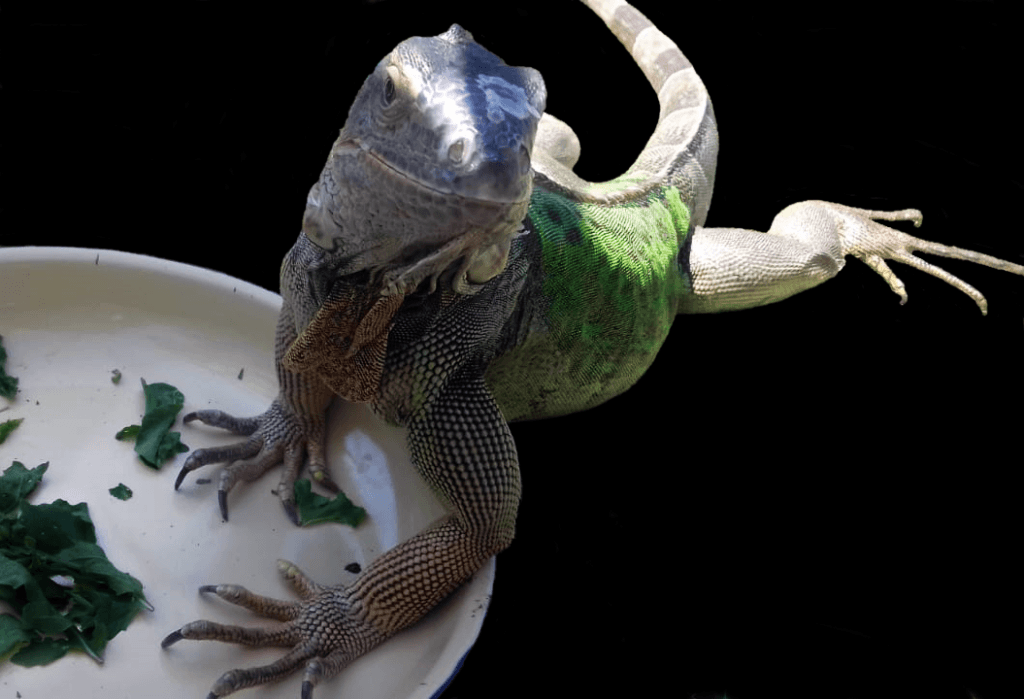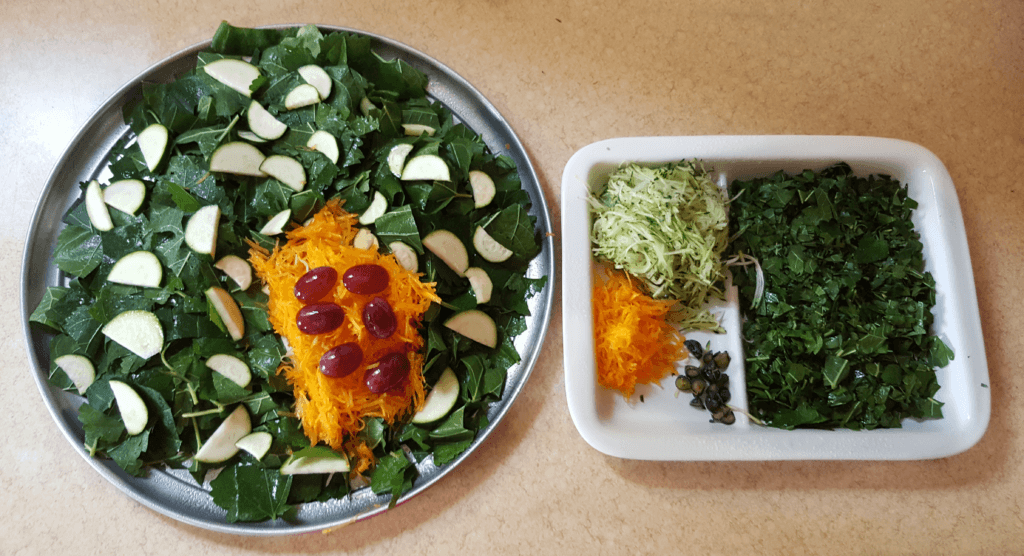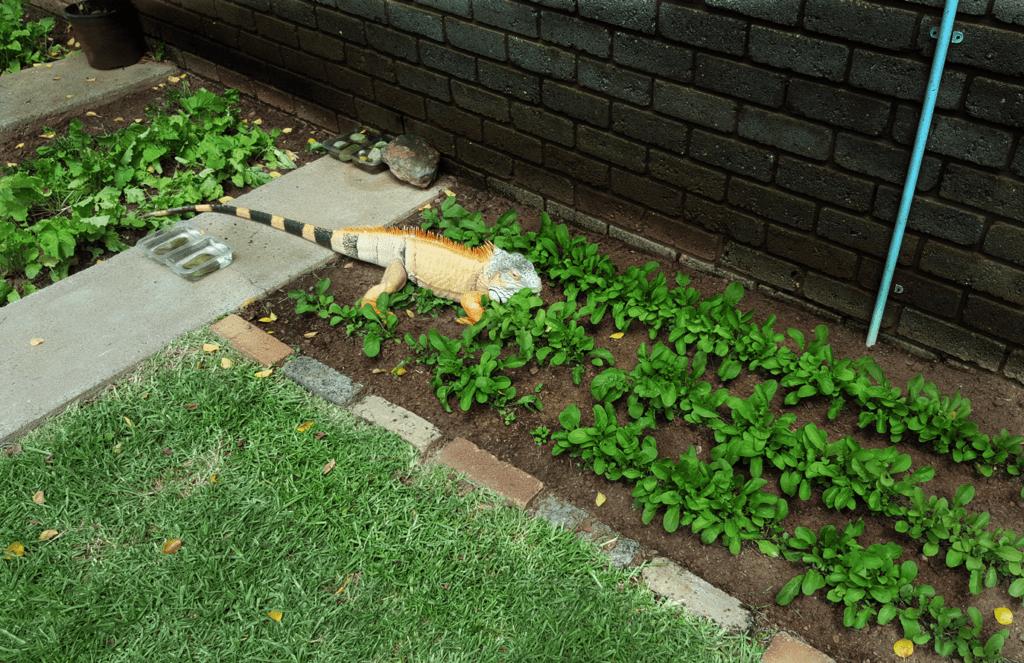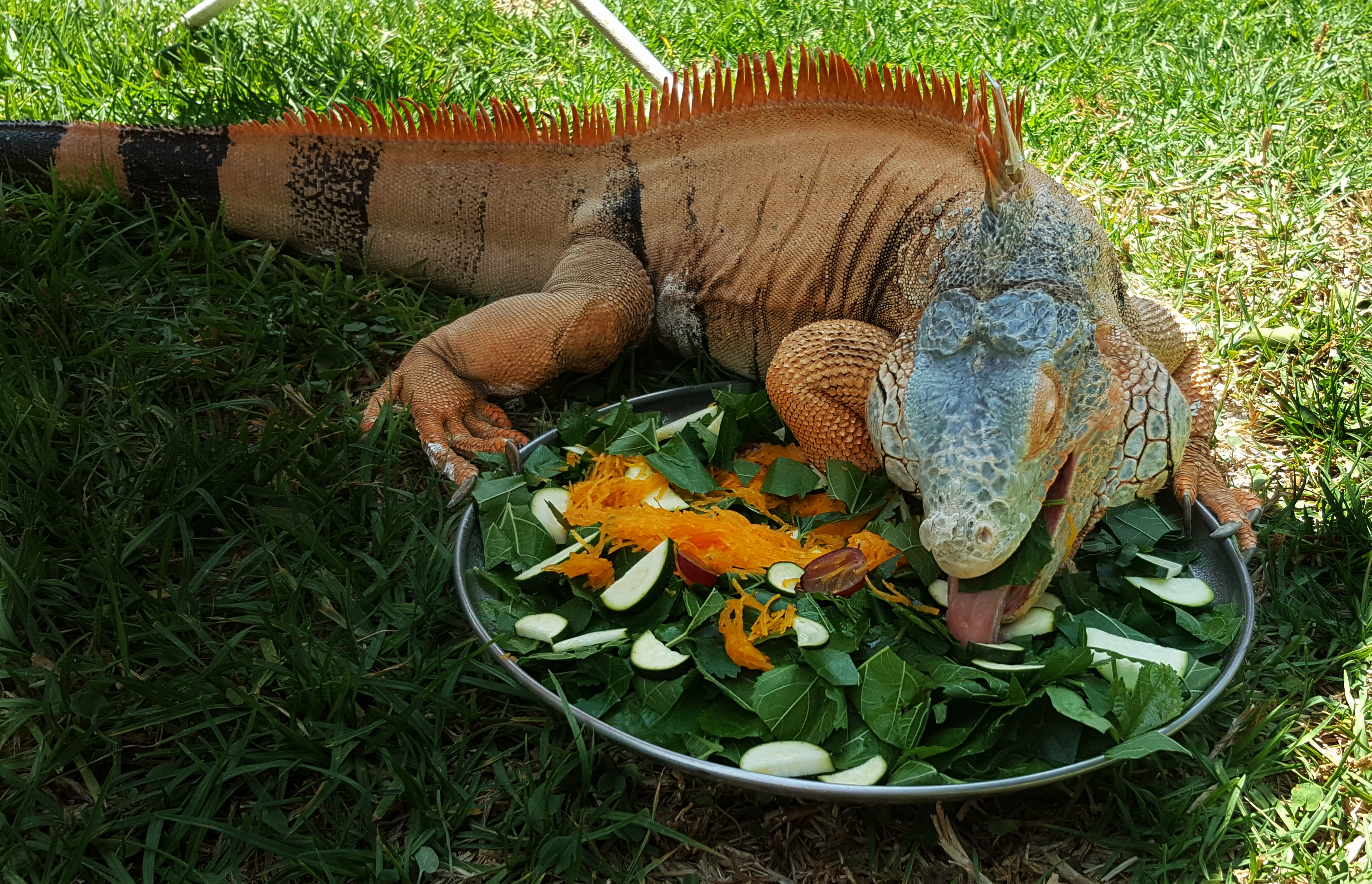When it comes to the diet of iguanas, a crucial area of focus emerges. As widely recognized, iguanas fall under the herbivore category. To delve deeper, an iguana is specifically categorized as a folivore, denoting creatures primarily reliant on leaves as their main food source. Naturally inhabiting tree branches, there exists no credible evidence to suggest that iguanas, whether young or mature, partake in the consumption of insects or other such prey.
Their physical attributes do not equip them with the predatory capabilities, such as agile movements or leaping prowess, required to apprehend swiftly moving insects. It’s important to note that iguanas possess the ability to metabolize only leaf-based sustenance, as their digestive system functions as a “Hind-Gut fermenter.” This process involves utilizing the lower intestinal tract to synthesize vitamins and absorb nutrients from ingested food. The significance of fiber in their diet cannot be overstated, and its composition evolves as the creature matures. Ideally, their dietary fiber should constitute no less than 16%.
The temperature of an iguana’s body plays a pivotal role in facilitating the digestion of its nourishment. Within their natural habitat, iguanas instinctively seek out sun-drenched basking spots to elevate their body temperatures to approximately 98 degrees Fahrenheit. Once this optimal temperature is attained, the feeding process commences. This physiological balance aids in the efficient breakdown of consumed food. When iguanas are kept in captivity, it becomes imperative to provide appropriate heating equipment to maintain the necessary temperature range.
Giant green iguanas also incorporate fruits into their dietary regimen, with bananas ranking among their favorites. The potassium content in bananas assumes a noteworthy role in their growth. Equally critical are other essential nutrients, including vitamin D, phosphorus, and calcium. To compensate for the lack of access to these vital nutrients in their natural habitat, it is recommended to supplement iguanas’ diets with vitamins and minerals twice a week.
Engaging in regular consultations with a local veterinarian is a prudent course of action for the ongoing care and well-being of a pet reptile. Establishing this practice could prove beneficial, especially considering that taking your giant green iguana for routine veterinary visits might become a norm.
The foundation of an iguana’s diet predominantly consists of dark leafy greens. However, caution is advised when it comes to spinach, parsley, and kale. These greens contain oxalates that hinder the iguana’s ability to absorb calcium. While ongoing research continues to explore this matter, it’s generally recommended to stay on the side of caution and limit or avoid these particular greens.
For young iguanas, a daily feeding schedule is recommended. In their native habitat, these creatures partake in multiple feeding sessions throughout the day. As they progress through their lifecycle, the frequency of meals naturally diminishes. It’s noteworthy that iguanas lack the capacity to chew their food; instead, they bite off portions of foliage and swallow them whole. Consequently, when caring for iguanas in captivity, it is essential to finely chop their food into manageable pieces that can be easily ingested.
You need to make a salad combining at least 5 different types of greens, 1 or 2 types of veggies, and 1 fruit. The greens must make out 70% of the dish. Greens should be cut into small pieces and veggies should preferably be grated. Fruits are cut into smaller pieces.

The Basic Iguana Diet
Staple Greens that Can be Fed Daily:
- Alfalfa, also called Lucerne
- Arugula (Rocket)
- Collard Greens
- Dandelion (pesticide-free)
- Endive
- Escarole
- Hibiscus leaves and flowers
- Marog (amaranthus hybridus)
- Mulberry leaves and the fruits
- Mustard Greens
- Nasturtium greens and flowers
- Turnip Greens
- Watercress
Occasionally Mix in with the Staple Greens – Do Not Feed Daily.
- Beet Greens (high in Oxalates and Phytates)
- Bok Choy (high in goitrogens)
- Carrot Tops (high in Oxalates and Phytates)
- Chicory
- Clover
- Kale (high in goitrogens)
- Spinach (high in Oxalates and Phytates)
- Swiss Chard (high in Oxalates and Phytates)
- Parsley
Recommended Vegetables 30-40%
Staple:
- Acorn
- Gem, Hubbard, Kabocha, Spaghetti squash
- Butternut
- Green Beans
- Parsnips
- Zucchini / Baby marrow
Occasional:
- Bell Pepper
- Broccoli (high in goitrogens)
- Celery
- Grated Carrots
- Okra
- Peas
- Pumpkin
- Snow PeasSweet Potato
- Yellow Squash
Fruits 10-15% Fruits contain a large amount of phosphorus.
Avoid any citrus fruit such as oranges and grapefruit. Use Melon, occasional Apples, and Banana (only very occasionally as a treat -bananas are very high in Phosphorus), and rarely Strawberry, Grapes, and Raspberry. When feeding any vegetable or fruit, always cut or shred it into small enough pieces.
List of Recommended Fruits
- Apple
- Apricot
- Bananas
- Blueberry
- Cherries
- Figs
- Grapes
- Mango
- Melon
- Papaya
- Peaches
- Pear
- Plums
- Raspberry
- Strawberries
Herbs that Can be Fed to Your Iguana:
Recommended to be mixed alternatively per day. It is impossible to write all the benefits of these herbs!
Coriander (Cilantro) – Containing an antibacterial compound, cilantro has been found to provide a natural means of fighting Salmonella and aids in digestion. It is also found to have anti-inflammatory properties. It is known to protect from metal poisoning. etc.
Basil – Anti-oxidant protection, anti-inflammatory and anti-bacterial, many essential nutrients, minerals and vitamins, bone strengthening function, etc.
Oregano – Anti-oxidant, anti-bacterial, source of iron, manganese, and dietary fiber, as well as a good source of calcium, vitamin C, and vitamin A.
Sage – Ant-oxidant, Anti-inflammatory, boosts brain function.
Peppermint – Relieves symptoms of irritable bowel syndrome, including indigestion, dyspepsia, and colonic muscle spasms. Anti-cancer agent, and stops the growth of many different bacteria. Excellent source of manganese, vitamin C, vitamin A, and beta-carotene.
Rosemary – Stimulates the immune system, increasing circulation, and improving digestion. Increases the blood flow to the head and brain, improving concentration.

Let’s Recap the Iguana Diet
It is crucial to refrain from feeding your iguana any type of meat, insects, eggs, cheese, dog food, or similar items. In the past, some people used to provide iguanas with meat or insects in an attempt to accelerate their growth, particularly during their early stages. However, this practice leads to kidney failure within a few years due to the detrimental effects of such a diet.
To meet your iguana’s protein requirements, it’s essential that protein be derived solely from vegetables. Since iguanas do not consume significant amounts of water, a substantial portion of their hydration comes from their food (Water should still always be available). Introducing dog or cat food to iguanas is hazardous, as these foods are imbalanced in nutrients and excessively high in protein.
Iguanas should be fed 1-2 times daily. (An Iguana should be fed until full) The recommended routine involves offering the main meal in the morning, followed by some light snacks during the evening, approximately 3 hours before their bedtime. Maintaining a consistent feeding schedule is beneficial, as iguanas thrive on routines.
The foundation of an iguana’s diet should consist of leafy greens, comprising around 50-60%. Vegetables and flowers should make up 30-40% of their diet, while fruits and berries should constitute a mere 10%.
It’s important to note that the dietary requirements for both baby and adult iguanas remain the same. It’s advisable to introduce a diverse range of greens, vegetables, and fruits right from the start to prevent your iguana from becoming a selective eater.
During the early stages of growth, allow your baby and juvenile iguana to consume as much food as they desire. However, as they approach 4-5 years of age, consider slightly reducing portion sizes to mitigate the risk of obesity.

